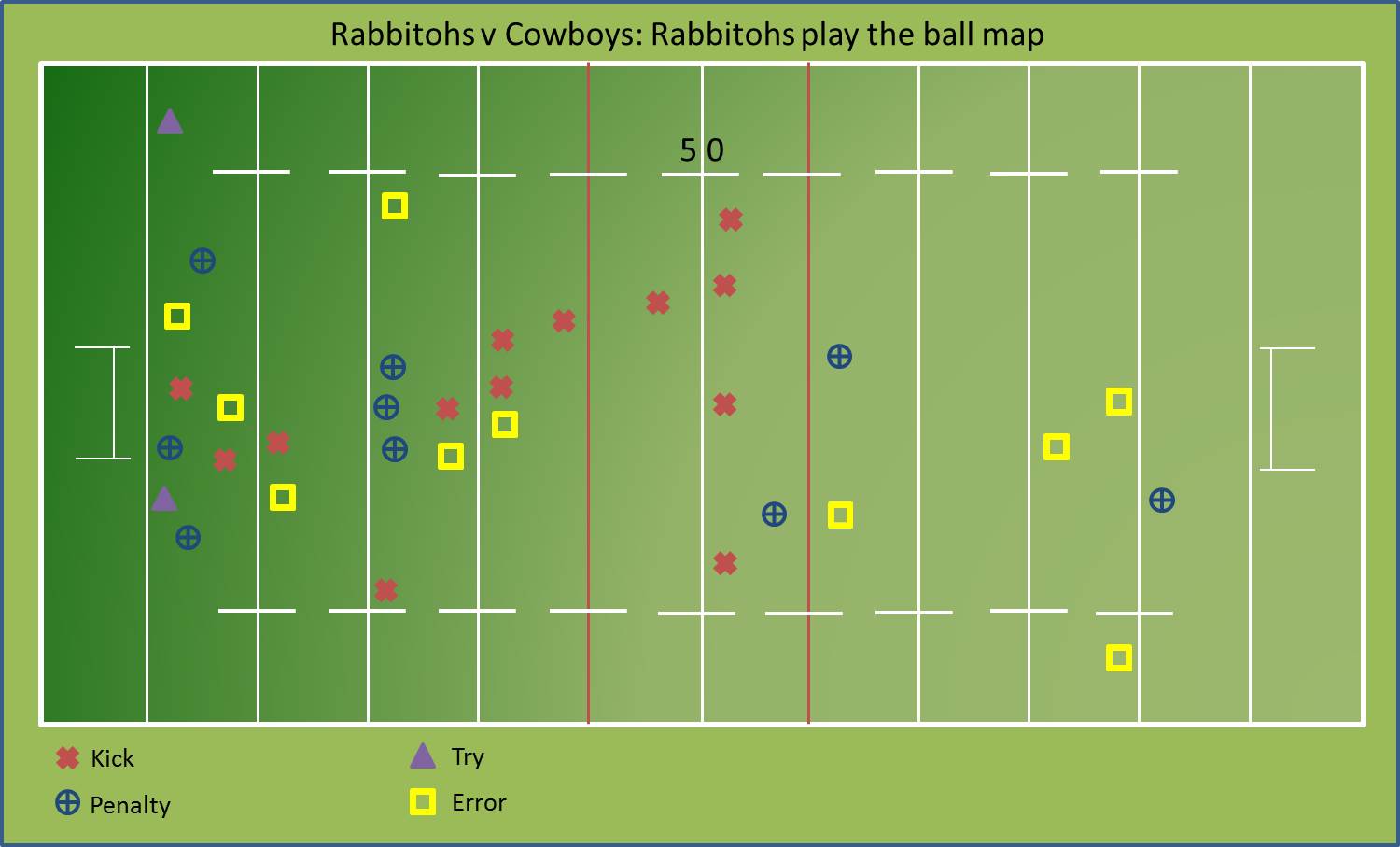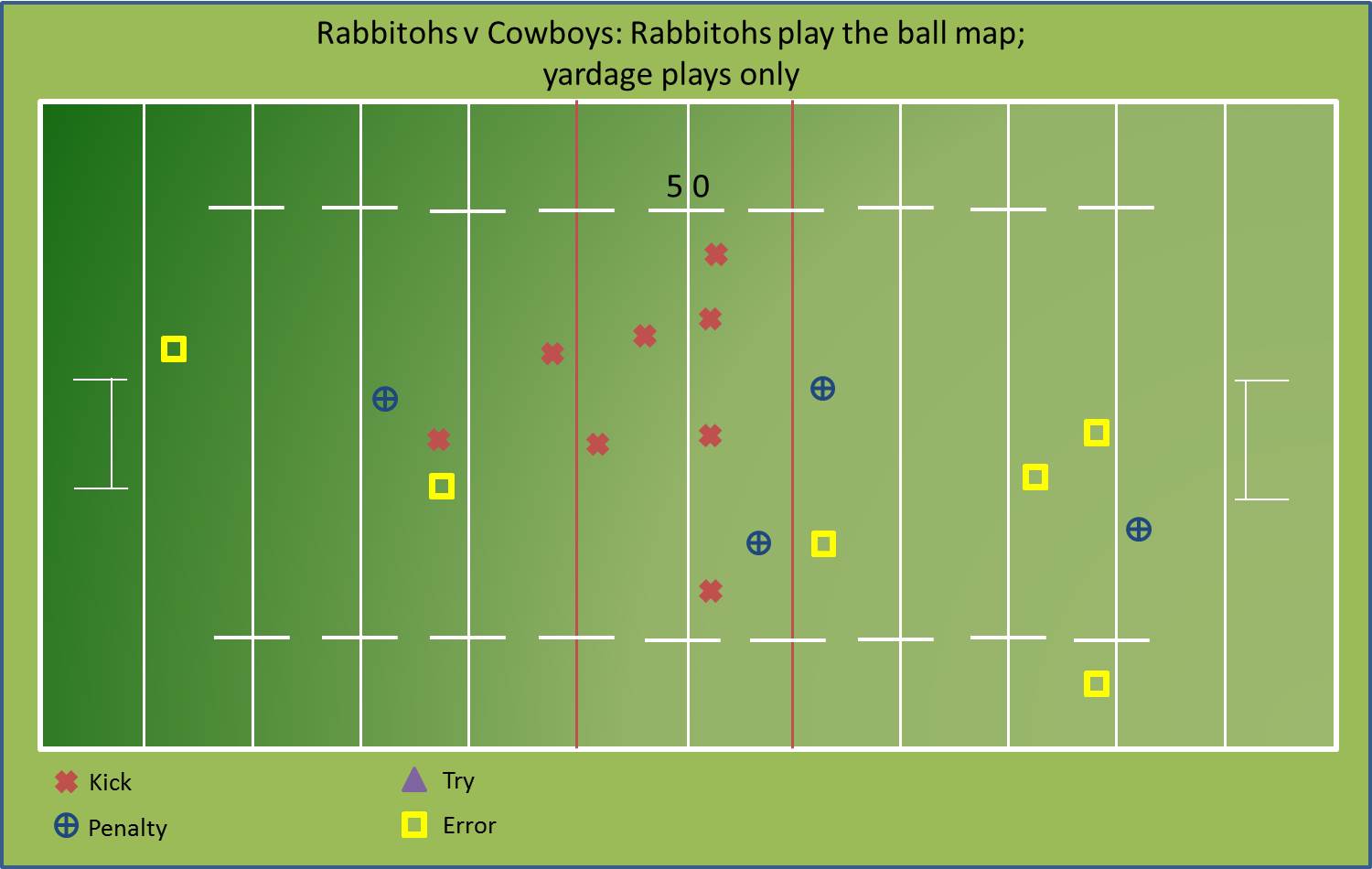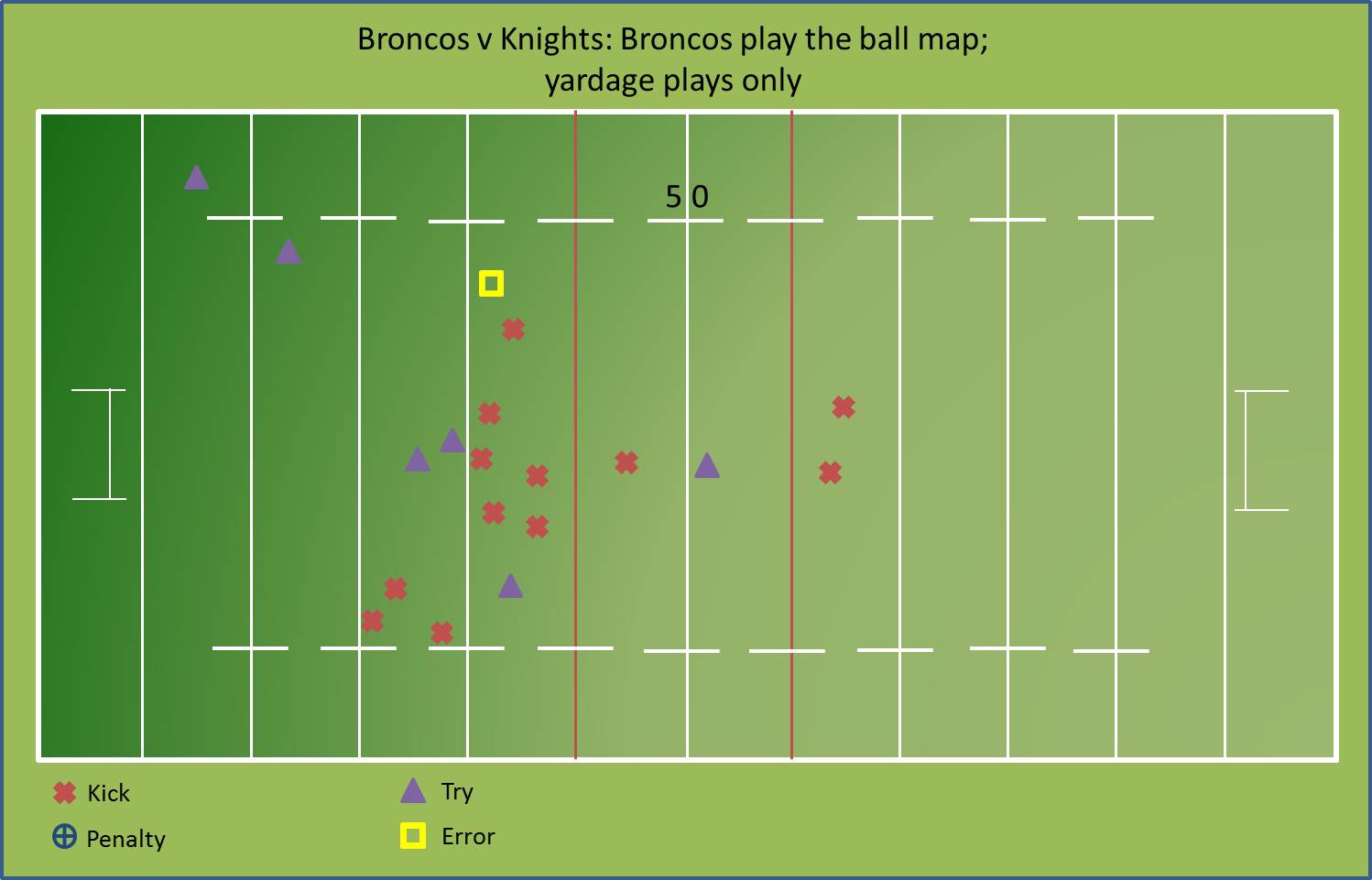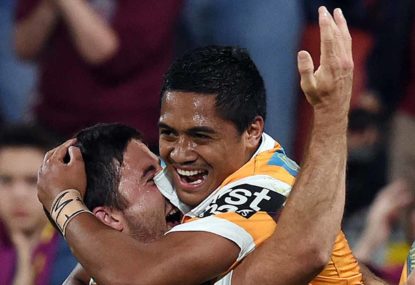Welcome back to The Roar‘s regular NRL Thursday Night Forecast series – Special Friday Edition.
With three games set down for Anzac Day on Monday the NRL gave us Thursday night off this week. But to compensate they’ve loaded up tonight’s Friday Night Footy with arguably the two biggest-drawing teams in the competition in the Broncos and Rabbitohs.
But while the teams might have similar statures in the game, they enter the contest on very different trajectories.
Recent Form
Eight weeks into the season and it is abundantly clear that there are two teams on an entirely different tier to the rest of the competition. Watching the Broncos and Cowboys is like watching the Scottish Premier League of old, where Rangers and Celtic traded titles year in, year out, and the only race beyond them was for third place.
As of this moment, the NRL is the Queensland two and then the rest (no doubt Eels fans are already getting their angry comment faces on, but as good as the Eels have been, they’re still a way behind the Queensland pair).
Unfortunately for the Rabbitohs, like the Dragons before them, they get both teams back-to-back on a North of the Tweed swing that is likely to be just as unproductive for the Bunnies as it was for the Dragons (at least until the Dragons upgraded the condition of their season to alive at Robina on Saturday afternoon).
The Rabbitohs are in a serious trough. After a blistering start to the season with big back-to-back victories, the team has only one win since. More than that, it has been the limp and lacklustre nature of the defeats that has been most concerning. Much will need to improve if they are to be any hope tonight.
THURSDAY NIGHT FOOTY, LIKE EVERY NRL GAME, IS LIVE ON FOXTEL
Team Sheet
| Broncos |
Position |
Rabbitohs |
| Darius Boyd |
Fullback |
Greg Inglis |
| Corey Oates |
Left Winger |
Bryson Goodwin |
| Jack Reed |
Left Centre |
Kirisome Auva’a |
| James Roberts |
Right Centre |
Hymel Hunt |
| Jordan Kahu |
Right Winger |
Aaron Gray |
| Anthony Milford |
Left Half |
Adam Reynolds |
| Ben Hunt |
Right Half |
Luke Keary |
| Josh McGuire |
Prop |
Thomas Burgess |
| Andrew McCulloch |
Hooker |
Cameron McInnes |
| Adam Blair |
Prop |
David Tyrell |
| Alex Glenn |
Left Second Row |
Chris Grevsmuhl |
| Matt Gillett |
Right Second Row |
Kyle Turner |
| Corey Parker |
Lock |
Sam Burgess |
|
|
|
| Jarrod Wallace |
Interchange |
Paul Carter |
| Sam Thaiday |
Interchange |
Jason Clark |
| Jo Ofahengaue |
Interchange |
Nathan Brown |
| Kodi Nikorima |
Interchange |
George Burgess |
While the Rabbitohs have named an unchanged line-up from last week, there are some interesting developments since we last saw the team for a Thursday Night Forecast, which was against Manly in Round 5.
The forward pack has been switched up several times, with Sam Burgess being tried at prop for two games and Thomas Burgess now promoted to the starting line-up at the expense of his twin brother George. Firebrand lock Nathan Brown has also alternated starting and bench roles while Chris Grevsmuhl is now starting at left second row, a role he probably should have had from the beginning of the season.
The reality is that many of the changes to the pack have been forced on coach Michael Maguire as he searches for a combination that gives the Rabbitohs a fighting chance. As we shall see below the Bunnies forwards have, for the most part, been very poor in 2016. Until such time as Maguire finds a combination that can at least draw level with the opposition, he will continue to experiment.
Meanwhile for the Broncos, super-coach Wayne Bennett has, unsurprisingly, named an unchanged team. So with no line-up changes to discuss, let’s instead use this section to look at one way in which star half Anthony Milford has substantially improved his game this season.
As good as Milford was in 2015, the one thing he did not do very much, or very well, was kick the ball. In fact, the Broncos were among the most lopsided teams in terms of the division of the kicking duties in 2015, with Ben Hunt putting in 357 kicks to Milford’s 63, a colossal disparity.
Of course, that is not to say that Milford was not effective in 2015. Indeed, even with virtually no kicking game, I still nominated him at five-eighth in my team of the year.
In 2016, however, the division of labour is heading towards equilibrium, with Hunt having put in 71 kicks to date this season and Milford 41. Milford has gone from averaging a little over two kicks per game in 2015 to now averaging nearly six, while Hunt has gone from nearly 14 kicks per contest back down to a more reasonable 10 per game.
While that is still skewed towards Hunt, it is approaching the sort of division that most teams in the NRL have – with a primary kicker and a secondary kicker rather than a primary kicking them the length of the straight and then the other guy who hoists ‘em up every now and then.
Moreover, Milford is not simply kicking the ball more often, he is kicking quite effectively as well. His seven kicks on Saturday evening yielded a try, a drop-out and three occasions where the Knights were forced to take a tackle inside their own 10-15m area.
If Milford is going to kick at a high level as well as everything else, the other teams might as well quit now and save the hassle.
What to watch for
With four losses from the last five games, there is clearly plenty going wrong for the Rabbitohs and it begins in the middle of the park. The key problem for the Rabbitohs is a forward pack that is undermanned and underproductive.
Of course, you’ve already read about the Bunnies’ struggles in the engine room, as it has been a popular refrain this week after two lifeless displays. But let’s take a closer look at just how lacklustre the team has been.
Firstly, the raw numbers on metres gained and conceded aren’t pretty. The team is averaging 1403 metres carrying the ball while conceding 1472 per game to the opposition. Obviously, it’s not ideal to be behind on that statistic, but it’s the way the Rabbitohs metres are coming (or not coming to be more accurate) that is more troubling.
The team has only one regular forward averaging over 100m per game with the ball – no prizes for guessing who that is. Sadly, as good as Sam Burgess is, he can’t do it all on his own and the lack of support he is getting, including from his two brothers who have both been terrible, is torpedoing the Rabbitohs’ season.
Raw statistics about how many metres the team makes, or certain players make, can give us a broad sense of the way in which a team is struggling to exert pressure. But the problem is thrown into stark relief when we consider what those statistics look like in terms of actual field position.
To get a better understanding of how difficult the Rabbitohs are finding things, I’ve developed the following chart which shows where the final play the ball occurred – whether last tackle or otherwise – on each of the Bunnies’ sets against the Cowboys and how the set ended, whether try, kick, penalty or error.
 Team is running right to left
Team is running right to left
While this chart is interesting and shows us that the Rabbitohs made a lot of errors inside their own end and that the Cowboys don’t mind giving away a penalty deep in defence, what it doesn’t really show is how poor the Rabbitohs are at establishing field position when they don’t have help.
So for this next chart, let’s isolate those sets that might be called ‘traditional yardage sets.’ These are “five (or six) tackles and a kick” sets that generally begin somewhere relatively deep inside the Rabbitohs own territory whether from a kick-off, Cowboys kick, 20m tap or a changeover.
To be clear, we are excluding those sets that start after South Sydney received a penalty or benefited from a Cowboys error. These are the cornerstone sets of success in rugby league. Winning these sets is how you build pressure and establish field position dominance.
 Team is running right to left
Team is running right to left
The problem now becomes apparent very quickly. Far too many of these sets end inside the Rabbitohs own half, or just past half way. From that far out, it is very difficult for even a good kicker like Adam Reynolds to put pressure on the fullback or winger as they receive the kick, let alone actually run an attacking play. The chart also shows far too many errors coming inside the team’s own 40-metre area, which gave the Cowboys try scoring opportunities.
Whether it is forwards making the dirty metres out of their own end or backs coming in to do the hard yards, you simply cannot expect to succeed when you are playing from inside your own half.
But if that is what poor forward momentum looks like, what does good forward momentum look like? This is where we turn to a final chart that shows the same yardage plays for the Broncos from their annihilation of Newcastle.
Once again this chart only shows the location of the final play the ball for sets that fit under the category of yardage plays. So no sets that came as a result of Knights errors or penalties the Broncos received.
 Team is running right to left
Team is running right to left
The difference is remarkable. Where for the Rabbitohs the majority of the sets were finishing at around the halfway mark, the Broncos are instead consistently getting over the opposition’s 40-metre line and beyond.
While ten or fifteen metres doesn’t sound like much, it makes a world of difference. With each high kick in the air lasting five or six seconds at most, giving your outside men a ten-metre head start makes it significantly easier for them to contest the ball as it lands, or at the very least pounce on the receiver as soon as he takes possession, pinning the opposition deep in their own territory.
Being that much closer also opens up more last play options with chip kicks, cross-field kicks and even grubbers now being more viable along with running plays.
At its core, rugby league is a simple sport and you can go a long way towards winning by holding the ball and having possession in the right parts of the field. For several weeks now (leaving aside a fifteen-minute burst at the start of the Sea Eagles game) the Rabbitohs have been unable to live up to the second part of that aphorism (and they’ve been pretty poor on the first part too).
The Broncos, meanwhile have been outstanding on both.
Watch closely tonight, and if the Bunnies are consistently getting over Brisbane’s 40 metre line then they may have a chance. But don’t count on it.
First try scorer – Corey Oates
Is Corey Oates playing? Yes. Is he playing on the wing? Yes. Is he my first try scorer prediction? Most definitely.
Prediction – Broncos
Anything is possible in the NRL, but to imagine a Rabbitohs win here is to stretch the boundaries from non-fiction to fiction to perhaps even science fiction.
For the Bunnies to win a number of things probably need to happen. Firstly, and most importantly, we would need to see a significant improvement from the Rabbitohs forwards over the course of a single week. While that may be possible, it is not especially plausible.
Secondly, the Rabbitohs will need to find a way to improve their defence after they conceded seven tries and seven line breaks in Round 7. Only one team performed worse in those categories. That was the Newcastle Knights who, of course, played the very same Broncos South Sydney face tonight.
Which brings us to the final thing that would probably need to happen for the Rabbitohs to win: the Broncos would have to play badly. From everything we have seen so far this season, the Broncos and Cowboys are well ahead of the rest of the competition and, for either of those teams to be beaten, they probably need to play some role in the loss.
Shoe in of the Week
Hands up if you’re already nauseated by comparisons between football players and soldiers? Yep me too. I suggest watching this one on mute.
Read the Thursday Forecast here every week and follow Lachlan on Twitter @mrsports83






























































































 Team is running right to left
Team is running right to left Team is running right to left
Team is running right to left Team is running right to left
Team is running right to left